Jagdalpur is a municipal corporation in the district of Bastar of the state of Chhattisgarh. It is the administrative headquarters of the district, which was once the capital city of the princely state of Bastar. The region surrounding Jagdalpur, along with the main city, forms a major part of the Bastar District. There is a mention of Jagdalpur and Bastar District in Valmiki's Ramayana, stating that Lord Rama passed through Dandakaranya. There is also an ancient ashram of sage Valmiki at this place. The Bastar District has been ruled by the kings of numerous dynasties, including the Nals, Kakatiyas and Chalukyas. Annam Deo was a famous Kakatiya king who left the city of Warangal and established his rule at Bastar in 1424. He was succeeded by King Hamir Deo, Pratap Raj Deo, Rajpal Deo and Dalpat Deo. Jagdalpur became the capital of the kingdom during the rule of Dalpat Deo, who was succeeded by his sons Ajmer Singh and Daryao Deo. Bhairam Deo was the great grandson of Daryao Deo, who died in 1891, leaving behind his son Rudrapratap Deo as the legal heir of Bastar.Jagdalpur witnessed a tribal revolt in 1910, when the country was under the control of the British. After the death of Rudrapratap Deo in 1921, the throne of Bastar was succeeded by his daughter Praphul Kumari Devi in 1922. She died in 1936 and the kingdom was handed over to her eldest son Maharaja Pravir Chandra Bhanj Deo. In the honour of Maharani Praphul Kumari Devi, the Maharani Hospital at Jagdalpur was built in 1937. Maharaja Pravir Chandra Bhanj Deo died in 1966 during the police action against his revolt for the rights of tribal people in Bastar District. His grandson, Maharaja Kamal Chandra Bhanj Deo, is the current king of Jagdalpur. The Rath Yatra of the king during Dussehra is the prime tourist attraction of the region. This festival has been an integral part of the destination and has been celebrated for over 75 days in Jagdalpur.
How to reach here:
By Air: The closest airport to Jagdalpur is situated in the capital city Raipur, which is around 300 km away.
By Rail: Jagdalpur Railway Station is also well-connected with the capital city Raipur and other important cities in India.
Best time to visit: October to February.
Languages spoken: Hindi.
Places you must visit:
The Kanger Valley National Park is situated near River Kolab, at a distance of about 27 km from Jagdalpur. This national park was established in 1982 and is bounded by various villages in the north such as Netanar, Nangalsar and Milkulwada. In the south, it is bounded by Kandanar and Kakalgur and in the west; it is bounded by Chindawada, Bispur, Tirathgarh, Pakhnar and Munaga.The 34 km long Kanger Valley derived its name from the Kanger River and is a declared Asian Biosphere Reserve. The national park has rich biodiversity and includes fauna like chital, chinkara, barking deer, bear, langoor, jackal, hyena, krait, panther, sambar, tiger, wild boar, black buck, wolf, fox, peacock, kala teetar, drongo and the rare mouse deer. It also ahs scavenger birds, birds of prey, pheasants, water birds, butterflies, moths and reptiles like snakes and lizards. The flora of this park consists of various lower forms of plants like algae, pteridophytes, fungi and bryophytes.


Indravati National Park was established in 1975 and occupies an area of 2273 sq km, on the south-east of River Indravati. The national park consists of tropical mixed deciduous forests and a series of hill ranges. This park is a major attraction for nature lovers, adventure seekers, photographers and holiday makers. It is mainly the home of hill mynah and wild buffaloes. The park also houses species like tiger, panther, nilgai, sambar, barking deer, chinkara, jungle cat, black buck, hyena, python, steppe eagle, bhura teetar, etc.


The Danteshwari Temple is situated at a distance of about 84 km from the city of Jagdalpur. It is located in Dantewada, to the south-west of Jagdalpur, near Bastar Palace and Gole Bazaar and at the confluence of the holy Dhankini and Shankini rivers.This popular and sacred 600-year-old temple is dedicated to Ma Danteshwari, a local goddess and an incarnation of Shakti. The temple was built in the South Indian style of temple architecture by the Chalukya kings, in the 14th century. The idol of the Goddess is chiselled out of black stone.It is believed that this temple possesses many divine powers. It is situated in a spacious courtyard and is surrounded by massive walls. There are four parts of the temple, namely, Maha Mandap, Sabha Mandap, Garbh Griha and Mukhya Mandap. The temple is also inclusive of a Garud Pillar at the entrance and a shikhara that is adorned with sculptural finery.The temple is considered a representation of the socio-religious-cultural history of the Bastar region. Every year, during Dusshera, many tribal people from neighbouring villages gather at this temple to pay homage to the goddess.The Danteshwari Temple serves as the most important spiritual centre for the people of this region, owing to its rich sculptural and architectural wealth and its vibrant festive traditions. It is also popular as one of the 52 ‘Shakti Pithas’ in India and derived its name from the belief that a tooth of Devi Sati fell at this place.

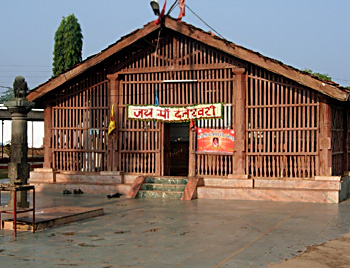

The Kailash and Kutumsar Caves are located at a distance of about 40 km from Jagdalpur. They are situated in the dense forests of Kanger Valley National Park, near the Tiratgarh Waterfalls.The Kutumsar Caves are basically underground caves that are situated 35 m below ground level and include extraordinary formations of stalagmites and stalactites.The caves are considered to be the second longest natural caves in the world and consist of five chambers and several blind wells. The caves are two kilometres deep and pitch-dark and are accessible only up to a certain point, owing to lack of oxygen in the deep parts.The Kailash Cave is located on a small hill and was discovered in 1993. The cave has a length of nearly 100 m. It has a narrow entrance and contains stalagmite and stalactite formations. A stalagmite formation in the shape of a Shivlinga is situated at the end of the cave. The fascinating feature is that when struck by hand, the hollow walls of the cave make amazing musical sounds.



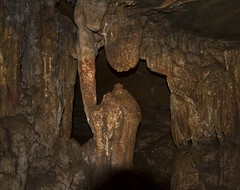
Sri Venkateshwara Swami Temple has been established by the members of the Andhra Association. The temple is dedicated to Lord Balaji or Sri Venkateswara Swami, the all-pervading Lord of the Universe.
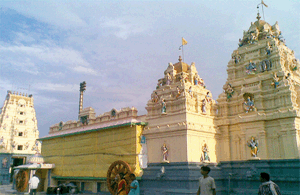


The Anthropological Museum is situated in the office of the Anthropological Survey of India at Dharampura. The museum provides a window-view of the lifestyles of several ‘adivasi’ tribes in Bastar.

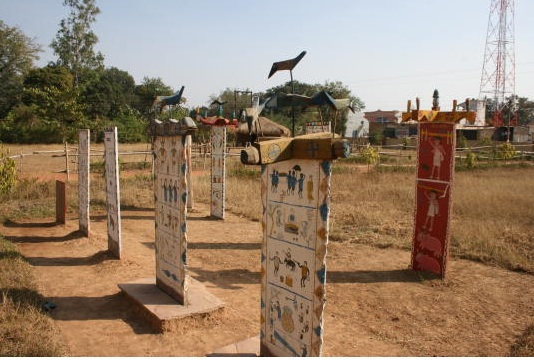

The Chitrakot Falls is the broadest waterfall in India and is considered to be the Niagara Falls of India, owing to its horse-shoe shape. The source of this waterfall is the Indravati River and it has a height of around 96 ft. The attractive feature of the falls is the play of rainbow hues on it. Around the falls, the area is largely forested and there is also a helipad nearby.
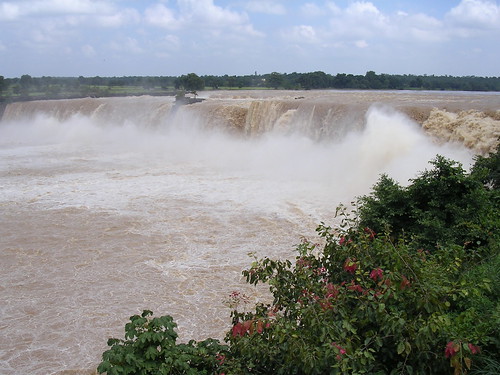
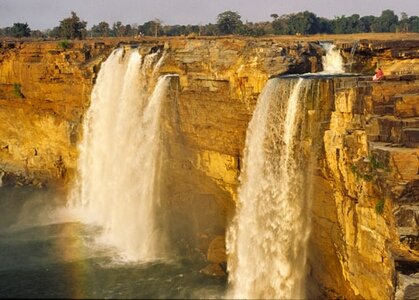

The Bastar Palace of Jagdalpur has historic significance. It was built by the rulers of Bastar State and was the headquarters of the Bastar Kingdom. It is still the residence of the Royal Family of Bastar State. The palace is an example of rich art and architectural work and is associated with many legends of heroism and chivalry of these kings.


The Tirathgarh Waterfalls is situated at a distance of 35 km from Jagdalpur, in the south-west direction. The waterfall has an approximate height of 300 ft and is situated in the Kanger Valley National Park.
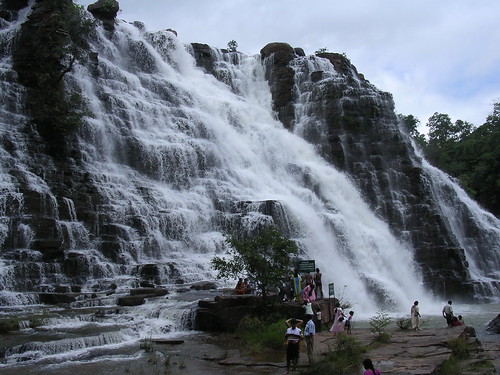
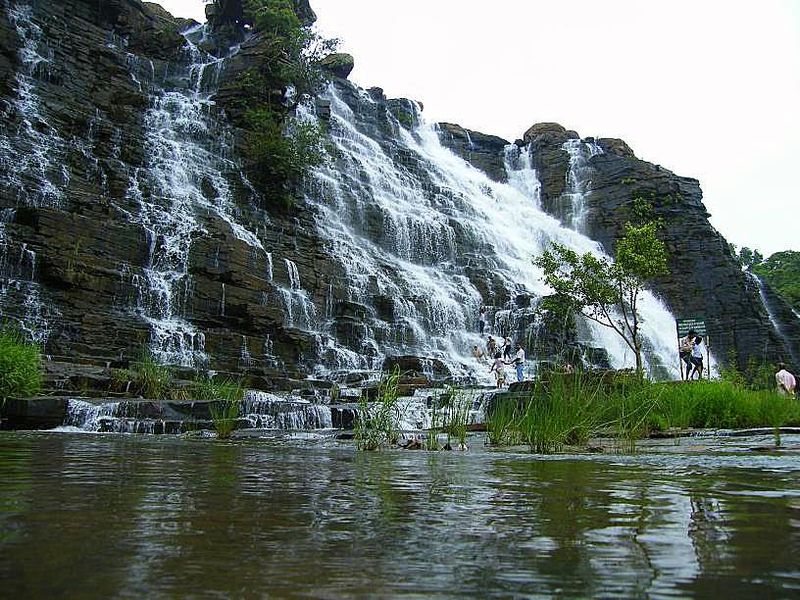
The Dalpat Sagar and the Ganga Munda are the two main lakes that are situated within the boundary of the town of Jagdalpur.



wow superb locations
ReplyDeleteSarees Online | buy sarees online | best sarees online | buy sarees online from india | silk sarees online | saree wholesale